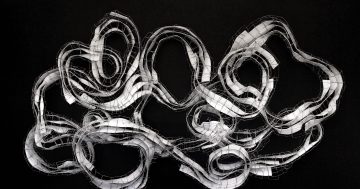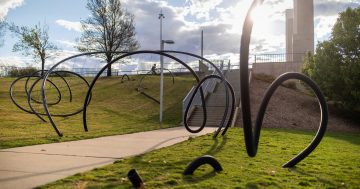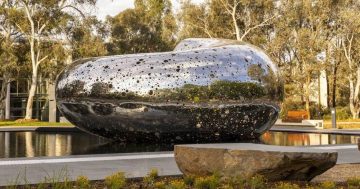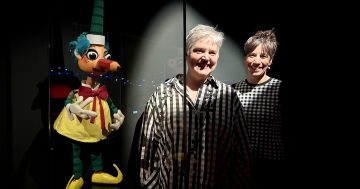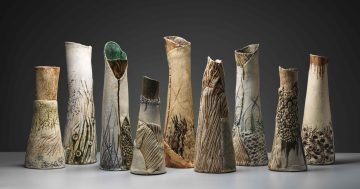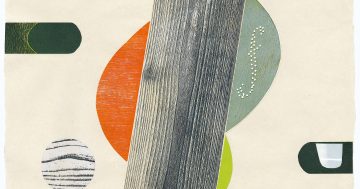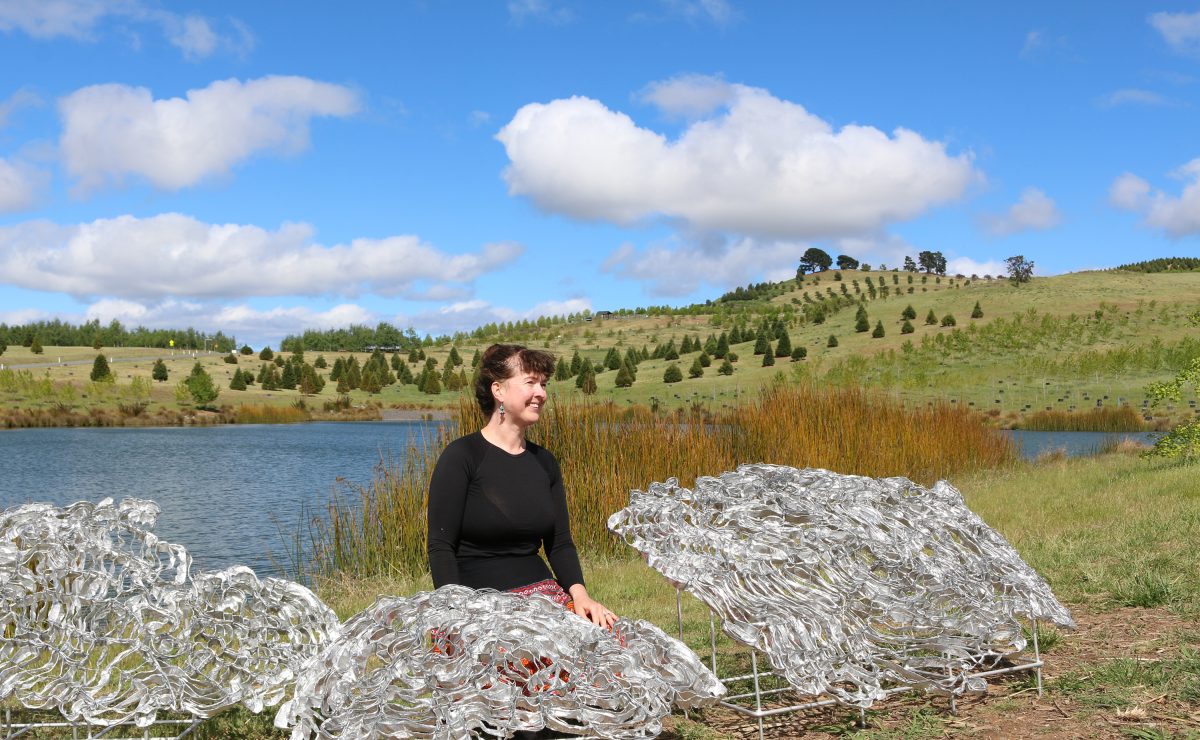
Artist Hannah Quinlivan with a maquette of her installation, Drawing Breath, which will be installed at the National Arboretum next year. Photo: National Arboretum Canberra.
A few years ago, Canberra artist Hannah Quinlivan began planting trees along the Murrumbidgee River – 2500 of them.
It was her way, she said, of dealing with the news of her mother’s terminal cancer.
“Each sapling served as more than a marker of my grief – they embodied a determination to reconstruct a future amid cycles of life and death,” she said.
“I was shaping the world not just for me, but for my children and grandchildren – turning the soil to find solace and purpose amid loss.
“Since that time I have become a planter. Each death and each birth is marked by new saplings placed within the earth’s embrace.”
Hannah had this vision in mind when she developed a plan for Drawing Breath, a huge sculptural installation to mark the 20th anniversary of the National Arboretum.
For Hannah, the work is a testament to the strength and resilience of the Canberra community. It will be located in the dam at the heart of the arboretum, the site that rose from the devastation of the 2003 Canberra bushfires which claimed four lives, hundreds of injuries and the destruction of 510 properties.
“Just as new life took root in the ashes, this artwork symbolises the beauty that can emerge from devastation, nurturing hope for the future,” she said.
“Drawing Breath reflects on the interdependence of the natural world and the Canberra community. In facing the looming challenges of climate change, the artwork speaks not only to our generation but to those who will follow us.
“Engaging with the dam and its catchment that unifies the surrounding landscape, the installation captures the resolve to reconstruct a more beautiful world, just as the dam captures water flowing down the slopes of the arboretum.”
Hannah said she loved to plant trees for her children and her children’s children. “That’s the beauty of the arboretum, planting trees for our future. It is one of my favourite places in Canberra. I have three children and we love nothing more than to go there and take the children to play.”
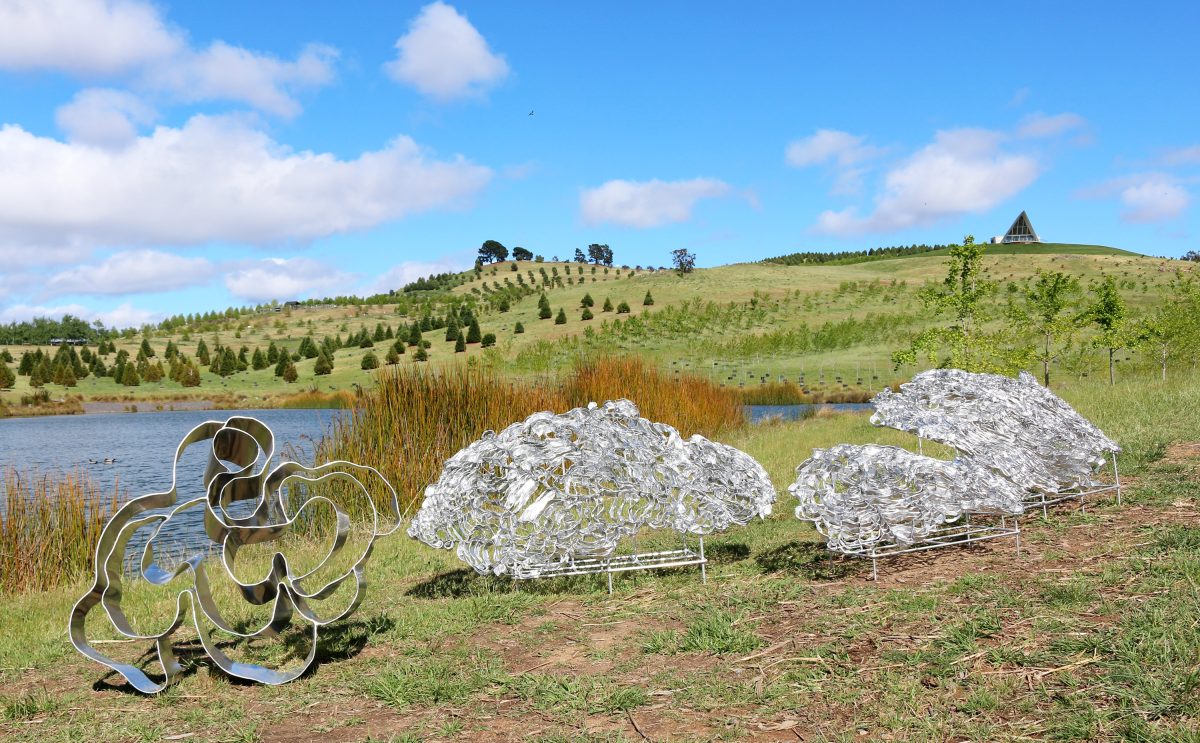
The maquette for Hannah Quinlivan’s sculpture, Drawing Breath, was unveiled at the National Arboretum on Tuesday near Ginko Dam. Photo: National Arboretum Canberra.
About 500 artists from all over the world applied when expressions of interest were called for the commemorative artwork last year. The final number came down to five, with Hannah, who graduated from the Australian National University with a Bachelor of Visual Arts in 2013 and is a PhD candidate within the School of Art and Design, named the winner.
A maquette of Drawing Breath was revealed at Tuesday’s announcement at Gingko Dam. Created from folded and fused aluminium, it will feature three large sculptural forms floating just above the dam’s surface.
“These abstract sculptural elements are in dialogue with the slopes and terraces of the arboretum,” she said. “Their topographic folds resonate with the contours of the land. The sculptures, suggestive of leaves or petals, maintain a delicate balance between abstraction and organic form.
“Positioned on the dam’s surface, they create a secondary layer of artwork through their reflection in the water. This mirroring effect invites visitors to contemplate the interconnectedness between humanity and the natural world.”
Hannah’s work has been exhibited widely in Australia and overseas, including on Lake Burley Griffin for the Canberra Biennial, at Canberra Hospital and a series of site-specific artworks for each of the Canberra Light Rail Network stations.
The arboretum piece, at 15 metres, will be one of her largest to date. She has designed it to be seen from different perspectives, including from the arboretum’s visitors’ centre as well as from the adjacent arterial road.
“The highest point will be about five metres, with the length of the three pieces together making roughly 15 metres,” she said.
“It’s something I’ve always thought about doing – having an installation hovering above the water. So when this opportunity came up, I jumped at it.
“When I got the call that I had been selected, I almost jumped out of my skin. Not only is it a professional challenge but it’s a personal challenge as well. It feeds on from the work I have already done in Canberra.”
Keen to help mentor young artists and grow their skills, she has invited some to work with her on the project.
The work is scheduled for completion in October 2024.
Original Article published by Sally Hopman on Riotact.


